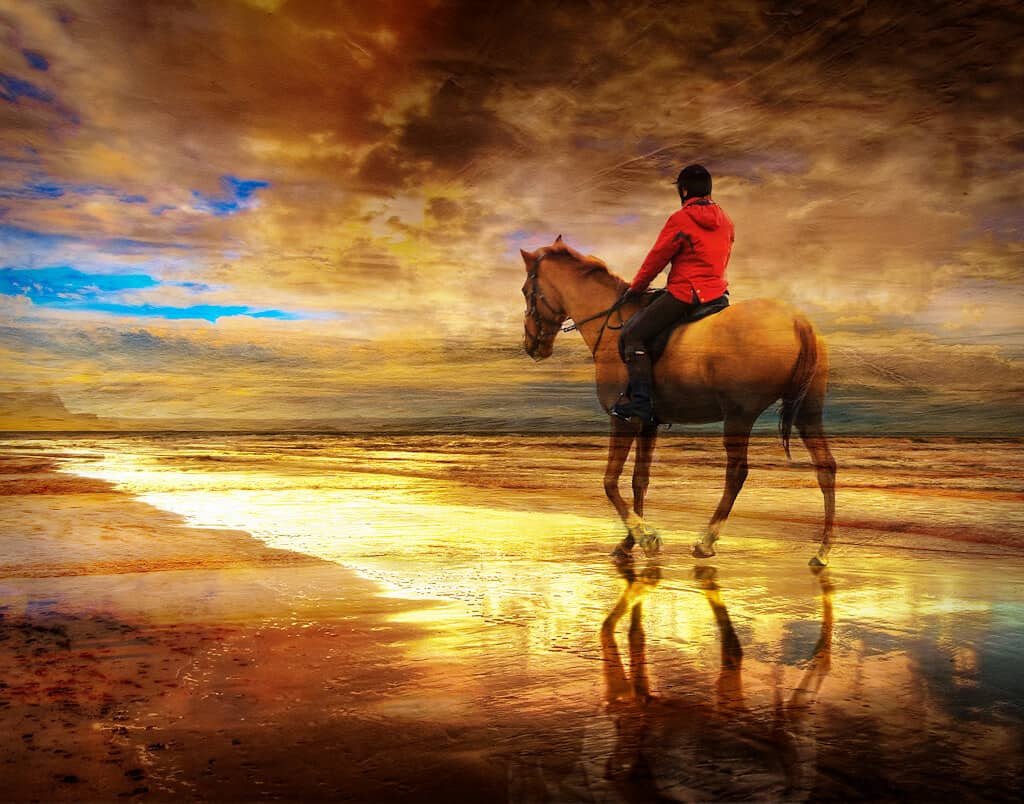In a sport dominated by female riders, the challenge is on to entice more male dressage riders into the fold. Defined by the International Equestrian Federation, dressage is described as the highest expression of where horse and rider are expected to perform from memory a series of predetermined movements.
Rich in military history, it was only a matter of time before dressage as a discipline was incorporated into the Olympics to test the military horse for exceptional obedience, maneuverability, and the ability to jump obstacles
But don’t be misled into thinking it’s an easy sport. While the elegance, grace, and consummate showmanship of dressage riders make it look all so simple, it is anything but and certainly not for the timid. Long hours in the saddle, determination, athleticism, and most notably partnering with a 1200 lb animal is only a small part of what it takes in this challenging sport.
Clothes Make the Man
Elegant, stylish, and form-fitting show clothes are the staple attire of the dressage arena on show day. For men, it’s white breeches, a white shirt with a stock tie, dark dressage coat or tailcoat, protective headgear, and black riding boots. And while on the subject of boots, you will need to invest in men’s riding boots that are not only designed for their looks but function as well.
Choose Your Horse Wisely
The horse’s size, breed, and color do not matter as long as he is sound and has correct paces. There is no upper age limit for horses or riders, but your horse must be at least four years old before you can compete in dressage competitions.
Look into the pros and cons of a youngster versus a schoolmaster before deciding to buy or lease your horse. A Schoolmaster is an old hand and more experienced. These horses are known as confidence builders as they build up your confidence in your ability to ride well and help you develop new skillsets.
A youngster, on the other hand, provides you with the ability to learn and grow together. In other words, you are working from a clean slate. Perhaps the most important thing about your horse is that it has regular paces and is not unsound. A dressage horse’s paces must be correct. This means his walk has a precise four-beat sequence. The trot is clearly two-time, and the canter is three-time.
Get Tacked Up
When starting out, you can make do with basic riding tack, as your horse is minimally tacked for dressage competitions. You can opt to buy a good quality second-hand saddle, or if your budget allows, invest in a specially designed dressage saddle that is fitted to both you and your horse. The saddle pad must be plain, white, or dark, in a solid color.
The bridle (usually black, sometimes brown) with cavesson, drop, or flash noseband connects to the reins via a snaffle bit.
Find the Right Instructor
If you are serious about the sport, finding the right instructor is crucial. Be honest about your riding goals and level of commitment. Remember, a coach will be spending a substantial amount of time with you and invested in your safety and development as a rider.
You will require an instructor with enough show experience to guide you through the training and showing process of dressage. A trainer’s level of experience will have a bearing on their fees. The right trainer for you is the person with whom you are comfortable, can communicate with, and makes training an enjoyable experience for both you and your horse.
How Long Does It Take to Train A Dressage Horse?
According to Carl Hester, one of Britain’s top dressage riders and trainers, it can take up to four to five years to get to Grand Prix level, as long as there are no setbacks along the way. He advises not to rush your schooling and ask for too much too soon from your horse.
Your horse must be strong enough to be able to do what you’re asking of him. If you do suffer a setback, in that your horse suffers an injury, it can take longer and often does to reach your desired dressage level.
Dressage is More Than Just a Sport
Hard work, commitment, and physical and emotional strength are all key elements in this sport. But the beauty of this discipline lies more in the journey of you and your horse that is unique to only you.

